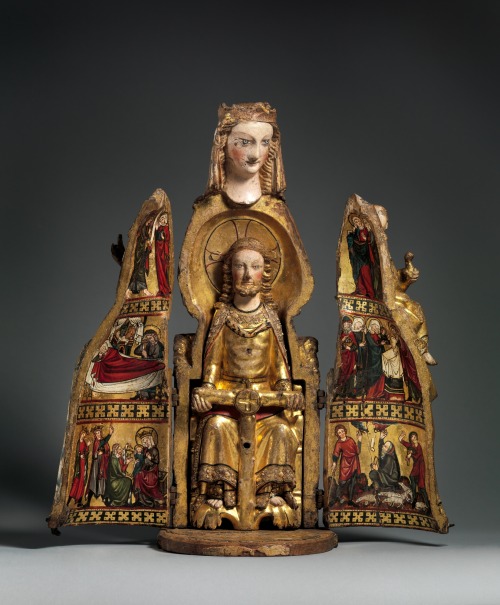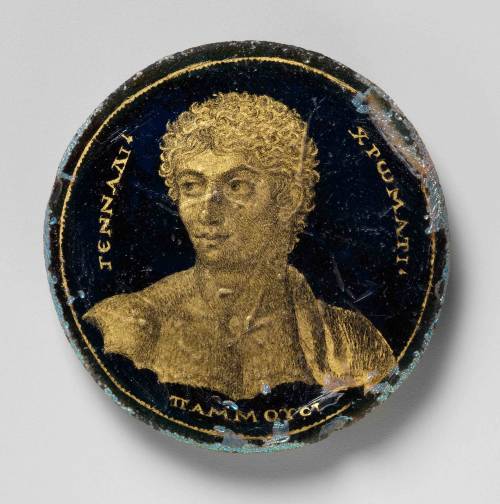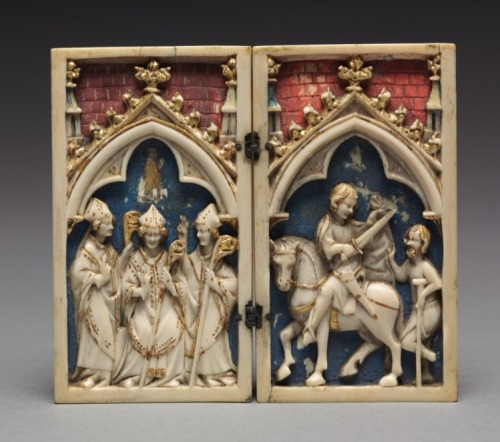#polychromy
Polychromy in Ancient Greek and Roman Sculpture
“The term “polychromy” has been in use since the early 19th century to denote the presence of any element of colour in Greek and Roman sculpture. The evidence for such polychromy is literary, epigraphical, archaeological, and archeometric; research on the subject therefore requires collaboration between the humanities, conservation science, and natural science. Such research should go hand in hand with the investigation of the polychromy of Greek and Roman architecture, since it is symbiotically related to sculpture, technically as well as visually.”
Discover the complicated history of polychromy and ancient Greek and Roman sculpture, detailed within this video.
Medallion with a Portrait of Gennadios,
Made in Alexandria, Egypt, Roman, 250–300,
This portrait was drawn with a needlelike point on gold leaf applied to the upper surface of deep blue sapphire.
Medallions like these, meant to be worn as jewelry, are closely associated with the bustling, cosmopolitan port city of Alexandria.
Glass, gold leaf, polychromy,
Overall: 1 5/8 x ¼ in. (4.1 x 0.6 cm)
Courtesy: Met Museum
Post link
Saint Avia (The Jailed Woman) +detail, c. 1500, Sculptures: Limestone with traces of Polychromy, Private Collection, Courtesy of Sam Fogg, London
Post link
Diptych with scenes from the Life of Saint Martin of Tours: The Consecration of Saint Martin as Bishop (left), Saint Martin shares his Cloak with a Beggar (right)
Cologne, Germany, 1340-50
Ivory with polychromy, gilding, and original silver hinges
“This beautiful and well-preserved diptych includes its original polychromy, gilding, and silver hinges, though these are no longer connected. With its lapis background, red roof tiles, and gilded details of the figures’ clothing, the appearance is one of luxuriousness. The diptych provides us with a rare and vivid impression of how such devotional ivories were originally decorated in the 14th century.”
Currently in the collection of the Cleveland Museum of Art. Image and description taken from the Cleveland Museum of Art website.
Post link






